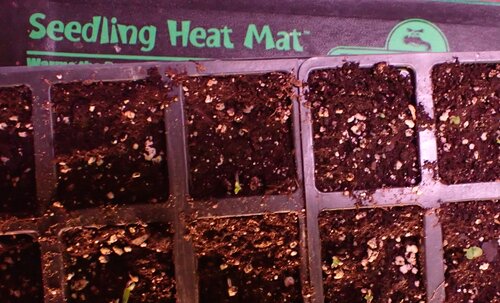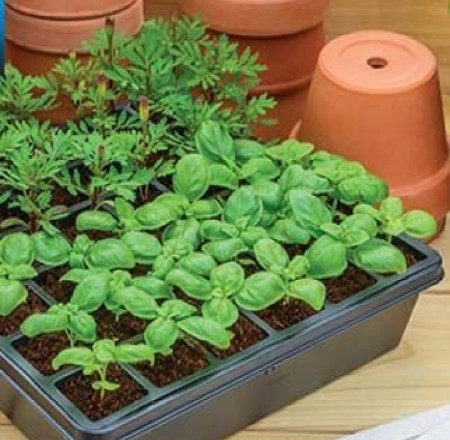Even if you don’t have access to a greenhouse, you can create conditions that will allow seedlings to thrive. Tops on the list of essentials are: a good source of light, air that circulates, adequate heat, and soil that holds water without becoming waterlogged. And it goes without saying that it’s essential to use good quality, fresh seeds!
Use Efficient Lights for Strong Growth LED Grow Lights are especially good for seedlings because they are designed to give off light in the wavelengths best utilized by plants, and they generate very little heat. While there’s no question that fluorescent tubes are less expensive initially, over the long run LEDs will cost less. They use a lot less electricity, and units can last as much as eight times as long as fluorescents.
A 600W LED grow light, hung at about 24 inches above the plants, provide plenty of light for a 3’ x 3’ growing space.
A rule of thumb: Set a timer so that lights are on your seedlings for 16 hours a day, off for 8. Or, leave them on full time.
For Air Circulation, a Fan
Once your seeds germinate, a fan will help prevent fungal diseases as well as strengthen your seedlings. Some gardeners opt to have an oscillating fan blowing around their seedlings at low speed 24 hours a day. An alternative is putting your fan on the same timer as your lights.
For Bottom Heat, a Heat Mat

There’s some leeway when it comes to optimum soil temperatures. Warm season crops such as tomatoes and peppers germinate best when soil temps are between 65° and 85°F. If the soil is too much warmer or cooler, germination will be slower, or may not happen at all. To speed up germination, place your seedling trays on a heat mat until the seedlings emerge.
Choose or Make a Quality Soil Mix
Packaged seed starting mixes are generally made with milled peat moss or coir (coconut fiber) combined with perlite and/or vermiculite, which help retain moisture and improve drainage. Some may incorporate fertilizer, though this is not essential for seed starting.
There’s no reason you can’t make your own mix using equal parts of coir or peat moss, sieved and pasteurized compost (heated for 30 minutes in a 250° oven), and perlite or vermiculite. Pasteurized garden soil is fine as an ingredient for pots, but is not ideal for seed starting.
Tip: Cover your trays with a plastic dome or plastic wrap after sowing seed for quicker action. Remove the covering at the first signs of green.
Seedling Containers Must Have Drainage Holes
Whether you purchase seed starting packs or use yogurt or other recycled containers, it’s essential that they drain well, to prevent soil from becoming waterlogged.

A Spray Bottle Will Keep the Soil Moist
When tender seedlings first emerge, treat them gently by misting them with a spray bottle. Once the roots are established they can be bottom watered.
Tip: Always moisten your soil mix before planting seeds.
Use Liquid Fertilizer Sparingly
Once the true leaves emerge, it’s time to start your seedlings on a weekly dose of half-strength fertilizer. Use an all-purpose liquid fertilizer or an odorless organic fertilizer.

Use Fresh Seeds
If you have any doubt that your seeds are fresh, do a germination test before sowing them. Some seeds, such as onions, parsley, and parsnips, should be bought fresh every year. For more information on storing and testing seed, read Old Seed: To Sow or Not to Sow.
source ; Home Garden



